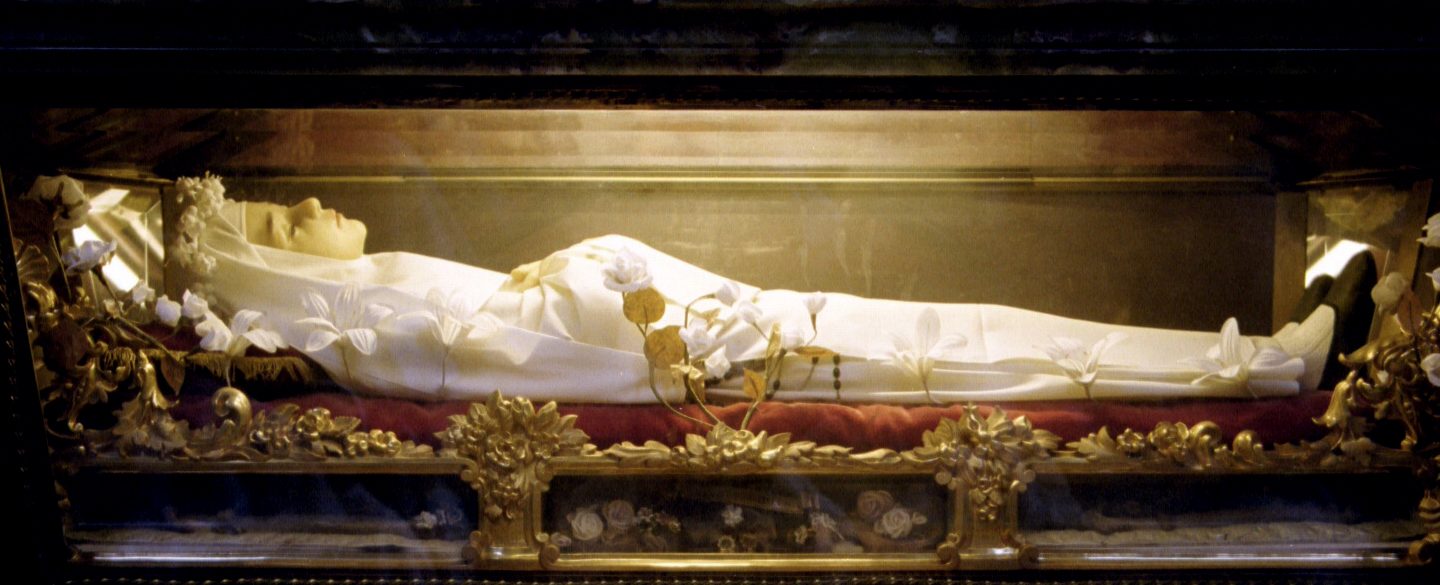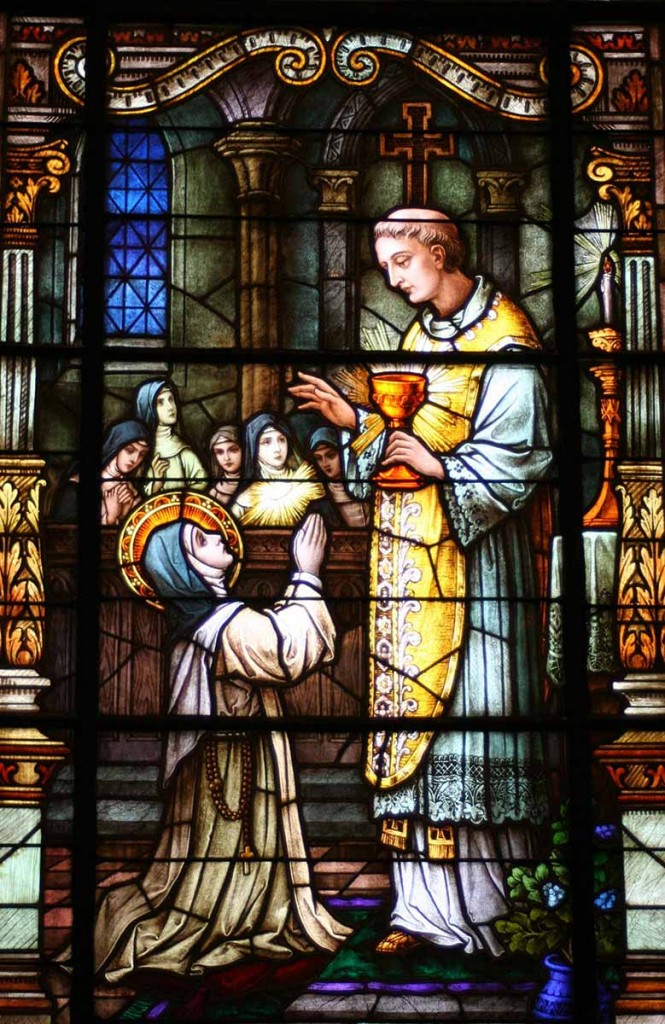
 Does it seem strange, at a time when we are called to the weighty task of being “intensely Eucharistic,” that Dominicans should look back almost seven centuries to consider the example of a nine year old little girl? Not so strange, really; in fact, not at all! For wasn’t it Jesus Himself who loved to hold children up as the best example of what He was trying to teach us all to become?
Does it seem strange, at a time when we are called to the weighty task of being “intensely Eucharistic,” that Dominicans should look back almost seven centuries to consider the example of a nine year old little girl? Not so strange, really; in fact, not at all! For wasn’t it Jesus Himself who loved to hold children up as the best example of what He was trying to teach us all to become?
And thus we are not embarrassed to consult a little girl in our Dominican family tree and seek from her the meaning of the call to be “intensely Eucharistic.” Little Imelda Lambertini would not have given us a theological treatise on devotion to the Holy Eucharist. She would simply have told us of Jesus’ love in the Sacrament, and then suggest that we learn to know Him there, as she did.
Dominican tradition tells us that Imelda Lambertini was born of a noble family in Bologna, Italy in 1322. Her parents raised her to love her Catholic faith, and through their influence she developed a love for prayer, especially for the Mass. Often she would attend Mass and Compline (Night Prayer of the Divine Office) at a nearby Dominican Church. Her mother also taught Imelda to cook and sew for the poor and cultivated in her child an eagerness to perform the corporal works of mercy. Even so, her mother and father, both of whom were getting on in years, were surprised when Imelda asked permission at the tender age of nine to go to live with the Dominican nuns at a neighboring monastery. As difficult a decision as this was, her parents evidently sensed the depth of their child’s desire and entrusted her spiritual formation to the Dominicans at Val di Pietra.
At this distance of centuries and culture it is not easy to determine precisely what little Imelda’s status was at the convent. It seems she was well loved by the sisters, who allowed her to wear the Dominican habit, to pray with them, and to follow their way of life to the extent that a little girl would be able to do while still remaining a child. Imelda, we are told, longed (and intensely, it seems) to be allowed to receive Holy Communion with the nuns, but in that day such a thing would have been unheard of for a child her age. Her pleading was again and again gently refused, with the explanation that she would need to wait until she was older and more prepared. For a time Imelda had to be content with this answer, meanwhile learning to chant Office from hearing the nuns in choir and developing her own interior prayer life in simple childlike ways. The saints, whose stories she had learned from her parents and from the nuns, became her “secret companions,” and probably had a hand in nurturing the longing she felt to receive Jesus intimately in the Sacrament of the Eucharist. In her private conversations with Jesus, with whom she was developing a deep friendship, we can imagine that she made known often her desire to be allowed to go to Communion. There is no evidence that He put up any opposition to the proposal—but neither did the sisters relent. And so Imelda continued, with the intensity of a child, to get to know Jesus more deeply, and to desire Him all the more.
As spring approached, the sisters, who perhaps thought that they had succeeded in diverting Imelda’s “childish fancy” to go to Communion with the grown-ups, were a bit startled when she asked again, shortly before the feast of the Ascension, to receive her First Holy Communion. (“Asked,” in fact, is not the word. She begged them insistently, it seems.) When the chaplain was consulted, he agreed with the sisters and responded with no hesitation that Imelda was much too young. On the Vigil of the Ascension Imelda was in her place in the chapel, quietly praying as the sisters received Communion. Then Jesus did a little “insisting” of His own. After Mass, as one of the nuns was clearing the altar, she heard a noise and looked up to the choir to see Imelda, a glowing light shining above her head, with the Sacred Host suspended in the light. The chaplain was called at once, and he understood that Jesus Himself was making his desire known. “Let the little children come to Me and do not stop them.” The priest gave Imelda her First Holy Communion.
We can well imagine that the nuns were amazed and thrilled both at the great blessing to their little one, and to their convent. The prioress allowed Imelda to remain for some time in thanksgiving, and then sent for her to come and have her breakfast. Imelda was still kneeling as they had left her, a smile on her face. Yet when called for, Imelda’s body was still. She had died of pure joy. Her thanksgiving had been well completed, and she had nothing left to desire.
Bl. Imelda’s story is so well entrenched in the collective memory of her Dominican brothers and sisters that it has remained firmly in the Order's history. She continues to offer the witness of a child with mature desires, and a faith unspoiled in its intensity.
Imelda understood instinctively what many of us have forgotten: that it is the single-hearted who are blessed and that unless we become like children we cannot enter the Kingdom of Heaven.
Feast: May 13

 Back
Back